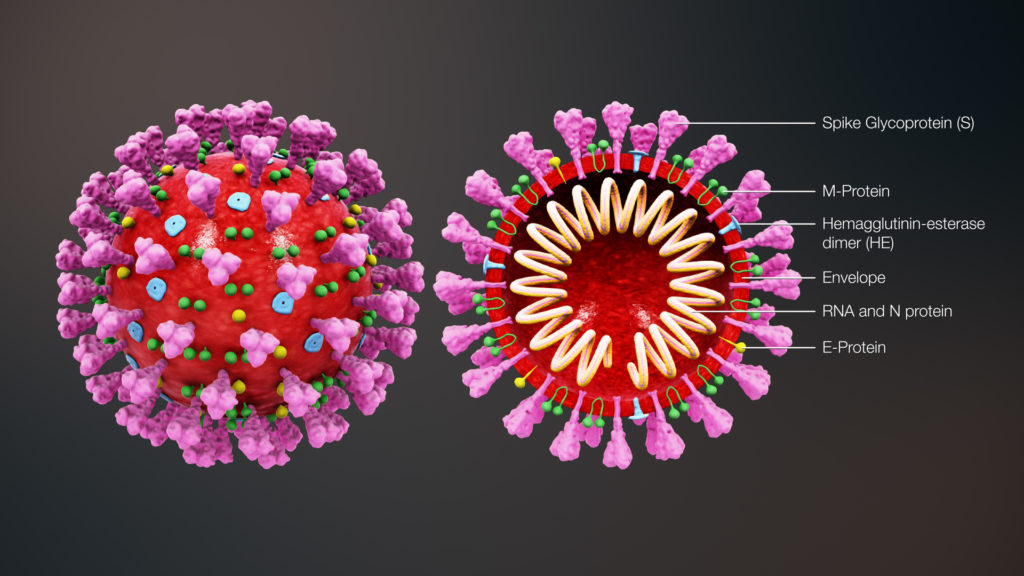What do you do if someone in your house gets sick? How do you know if they have COVID 19, allergies, a cold or the flu? What do you do if they can’t get tested? How do you protect the other family members?
First you need to decide whether to stay home. So, how do you decide?
3 Ways to Decide if it Could be COVID 19:
- Fever – 98% of COVID patients had fever* (*The Lancet: 2-15-20)
- Check a temperature. If it’s greater than 99˚F, then they have an infection with something (probably a virus or bacteria, not necessarily COVID) and you can rule out allergies
- Cough – 75% of COVID patients had a cough*.
- All these things can cause a cough, but if the cough has been there for a while and it’s accompanied by sneezing, runny nose and itching anywhere in the mouth, nose or eyes, it’s probably allergies.
- If the cough comes with a bad headache, or “all over” body aches it’s most likely an infection. The common cold can do this, but it usually has milder symptoms. (44% of COVID patients had muscle aches or fatigue*)
- Productive cough (bringing up thick secretions when you cough – not watery, clear thin mucous) is more suspicious of a deep lung infection, but a dry cough counts for COVID too.
- Shortness of breath (usually within 7 days after onset of other symptoms)
- This means you get “winded” easily when walking (or even when you’re sitting still) or have trouble “catching your breath”.
- Chest pain may mean pneumonia but can also happen if you’re coughing a lot and the muscles get pulled.
- Anxiety can cause shortness of breath too so be mindful, and if in doubt discuss it with a medical professional to clarify.
If you have fever, cough and/or aches and/or fatigue consider yourself infected until proven otherwise and stay home. Shortness of breath is a later finding and may not happen to everyone so don’t count on it being present. But if it is, call your medical professional for advice.
Okay, so you or someone in your family has symptoms…now what? Read on for advice. (Much of this is from the CDC website).
Steps to Help Prevent the Spread of COVID-19
Follow the steps below: If you are sick with COVID-19 or think you might have it, follow the steps below to help protect other people in your home and community.
Stay home except to get medical care
- Stay home: People who are mildly ill with COVID-19 are able to recover at home. Do not leave, except to get medical care. Do not visit public areas.
- Stay in touch with your doctor. Call before you get medical care. Be sure to get care if you feel worse or you think it is an emergency.
- Avoid public transportation: Avoid using public transportation, ride-sharing, or taxis.
Separate yourself from other people in your home, this is known as home isolation
- Stay away from others: As much as possible, you should stay in a specific “sick room” and away from other people in your home. Use a separate bathroom, if available
- Keep the door to the “sick room” closed to prevent the spread of respiratory droplets to other family members in the home.
-
- If the sick person must share a bathroom have them wear a mask or cover their mouth with a tissue when entering
-
- If multiple people are ill, they can stay in the same “sick” room
- Limit contact with pets & animals: we’re not sure about whether they can spread the virus but it’s possible so play it safe.
Call ahead before visiting your doctor
- Call ahead: If you have a medical appointment, call your doctor’s office or emergency department, and tell them you have or may have COVID-19. This will help the office protect themselves and other patients.
Wear a face mask if you are sick
- If you are sick: You should wear a face mask when you are around other people and before you enter a healthcare provider’s office.
- If you are caring for others: If the person who is sick is not able to wear a face mask (for example, because it causes trouble breathing), then people who live in the home should stay in a different room. When caregivers enter the room of the sick person, they should wear a face mask. Visitors, other than caregivers, are not recommended.
- Caregivers: Avoid touching your eyes, nose and mouth
Cover your coughs and sneezes
- Cover: Cover your mouth and nose with a tissue when you cough or sneeze.
- Dispose: Throw used tissues in a lined trash can.
- Wash hands: Immediately wash your hands with soap and water for at least 20 seconds. If soap and water are not available, clean your hands with an alcohol-based hand sanitizer that contains at least 60% alcohol.
Clean your hands often
Wash hands: Wash your hands often with soap and water for at least 20 seconds. This is especially important after blowing your nose, coughing, or sneezing; going to the bathroom; and before eating or preparing food.
- Hand sanitizer: If soap and water are not available, use an alcohol-based hand sanitizer with at least 60% alcohol, covering all surfaces of your hands and rubbing them together until they feel dry.
- Soap and water: Soap and water are the best option, especially if hands are visibly dirty.
- Avoid touching: Avoid touching your eyes, nose, and mouth with unwashed hands.
Avoid sharing personal household items
Do not share: Do not share dishes, drinking glasses, cups, eating utensils, towels, or bedding with other people in your home.
- Wash thoroughly after use: After using these items, wash them thoroughly with soap and water or put in the dishwasher.
- Label drinking glasses and hand towels so there is no sharing during this time. Wash all hand towels daily in hot water and then dry with high heat. Laundry from the sick room may be combined with household laundry.
Clean all “high-touch” surfaces everyday
If you are sick, clean high-touch surfaces in your isolation area (“sick room” and bathroom) every day; let a caregiver clean and disinfect high-touch surfaces in other areas of the home.
- Clean and disinfect: Routinely clean high-touch surfaces in your “sick room” and bathroom. Let someone else clean and disinfect surfaces in common areas, but not your bedroom and bathroom.
- If a caregiver or other person needs to clean and disinfect a sick person’s bedroom or bathroom, they should do so on an as-needed basis. The caregiver/other person should wear a mask and wait as long as possible after the sick person has used the bathroom.
High-touch surfaces include phones, remote controls, counters, tabletops, doorknobs, bathroom fixtures, toilets, keyboards, tablets, and bedside tables.
- Clean and disinfect areas that may have blood, stool, or body fluids on them.
- Household cleaners and disinfectants: Clean the area or item with soap and water or another detergent if it is dirty. Then, use a household disinfectant.
- Be sure to follow the instructions on the label to ensure safe and effective use of the product. Many products recommend keeping the surface wet for several minutes to ensure germs are killed. Many also recommend precautions such as wearing gloves and making sure you have good ventilation during use of the product.
- Most EPA-registered household disinfectants should be effective.
Monitor your symptoms
- Seek medical attention but call first: Seek medical care right away if your illness is worsening (for example, if you have difficulty breathing).
-
- Call your doctor before going in: Before going to the doctor’s office or emergency room, call ahead and tell them your symptoms. They will tell you what to do.
- Wear a face mask: If possible, put on a face mask before you enter the building. If you can’t put on a face mask, try to keep a safe distance from other people (at least 6 feet away). This will help protect the people in the office or waiting room.
- Follow care instructions from your healthcare provider and local health department: Your local health authorities will give instructions on checking your symptoms and reporting information.
Call 911 if you have a medical emergency: If you have a medical emergency and need to call 911, notify the operator that you have or think you might have, COVID-19. If possible, put on a face mask before medical help arrives.
How to Discontinue Home Isolation
People with COVID-19 who have stayed home (home isolated) can stop home isolation under the following conditions:
- If you will not have a test to determine if you are still contagious, you can leave home after these three things have happened:
- You have had no fever for at least 72 hours (that is three full days of no fever without the use medicine that reduces fevers)
AND - other symptoms have improved (for example, when your cough or shortness of breath have improved)
AND - at least 7 days have passed since your symptoms first appeared
- If you will be tested to determine if you are still contagious, you can leave home after these three things have happened:
- You no longer have a fever (without the use medicine that reduces fevers)
AND - Other symptoms have improved (for example, when your cough or shortness of breath have improved)
AND - You received two negative tests in a row, 24 hours apart.
In all cases, follow the guidance of your healthcare provider and local health department.
The decision to stop home isolation should be made in consultation with your healthcare provider and state and local health departments. For more great resources go to:
https://www.cdc.gov/coronavirus/2019-ncov/if-you-are-sick/steps-when-sick.html







